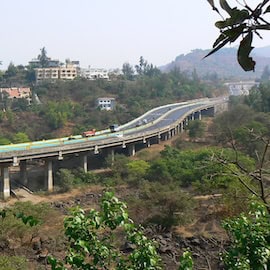The Indian state of Kerala recently approved a State Design Policy (SDP) which is the first of its kind in the country. Though India ratified a National Design Policy in 2007, its objectives were broadly restricted to promoting Indian design through regulatory and institutional backing and aligning Indian design education with international standards.
Kerala’s SDP, on the other hand, is closer to design policies the United Nations has consistently advocated, which have been adopted most notably by the European Union. Between 2012 and 2016, several EU countries, including Denmark, Estonia, Finland, France, Ireland and Latvia — as well as the European Commission — adopted dedicated design action plans or policies. These policies provide a comprehensive framework for incorporating good design principles into government activities spanning across all sectors. By focusing on end-user experience, they aim to increase the well-being and quality of life of these countries’ citizens by providing guidance that can help optimize the design of everything from infrastructure and public services to government policy.
Kerala’s SDP heralds growing opportunities for public-private partnerships in India, through which design firms and businesses can collaborate with the government to create effective design interventions that address social or sustainability challenges. The policy recognizes that design goes far beyond just aesthetics: As stated in the government order, design is “the process of converting existing situations into preferred ones.” It’s about envisioning optimal solutions to complex challenges through a human-centric lens.
Good or bad design can have a major impact on people, whether it involves everyday objects like cutlery and furniture, or large public infrastructure like transportation, urban planning and tourism. Below, we’ll explore the value and significance of design by sharing several examples of strategic design choices that have made a major impact on businesses, governments — and the communities they serve.
Design in daily use
In his book “The Design of Everyday Things,” pioneering design researcher Donald Norman argues that a well-designed object should be intuitive and easy to use, with features that communicate its function. Think about the frustration of pushing a door that’s meant to be pulled. This seemingly simple interaction highlights Norman’s concept of “affordances,” which are the inherent clues an object offers about how it can be used. Ideally, the design of a door (e.g., its handles, signage and visual cues) should communicate the action you need to take — for instance, a door with a horizontal bar tells you it opens by pushing, while a vertical bar suggests that it opens by pulling. In contrast, a poorly designed door offers no such clues, leading to confusion and wasted effort.
Simple tweaks in design can make experiences better for users. To take one example, in 2016, Dr. Reddy’s Laboratories, an Indian multinational pharmaceutical company, collaborated with IDEO to redesign its syrup bottles and blister packs and make them more convenient for patients, especially the elderly. The new blister packaging came with stubs at both ends mentioning the medicine’s name, dosage, and manufacturing and expiry dates — ensuring that this key information would remain readable even after the pills had been popped out of the strip. The new syrup bottles had easy-to-hold measuring cups and necks to reduce spillage. A similar approach was taken by the laundry detergent companies Ariel and Tide, whose detergent bottle designs incorporate an innovative cap that functions as both a measuring cup and a no-drip pour aid.
Other companies have leveraged cognitive principles in their product design, aiming to improve user experience while establishing or strengthening their brand. For example, IKEA’s do-it-yourself proposition is based on the simple principle that people tend to value an object more if they make (or assemble) it themselves — something that has come to be called the IKEA effect.
Expanding the scope to large-scale product and service design, in 2016, the design and technology services company Tata Elxsi collaborated with Kochi Metro Rail Ltd., a rapid transit system serving the Keralan city of Kochi, to design various elements of the metro system — including stations, train coaches, way-finding signage, branding, ticketing solutions, a mobile app and accessibility features. Further exemplifying participatory design approaches, Kochi Metro Rail engaged the public in 2023 to co-create the architectural and signage designs of the new metro stations planned for the transit system’s second phase corridor expansion.
Design in road safety
However, the impact of design extends far beyond consumer products and buildings. Take a look at road safety in India, for instance: Almost half a million people were hurt in road accidents in 2022, and over 168,000 tragically died (a jump of 9.4% from 2021, and an all-time high). Road crashes cost India a whopping 3-5% of its GDP annually. A 2023 report by the Transportation Research and Injury Prevention Center at the Indian Institute of Technology, Delhi highlighted that India’s current motor vehicle laws are biased towards attributing road accidents to human error, resulting in 80% or more of these cases being recorded as the fault of drivers. This limited view ignores the potential role of poorly designed vehicles, roads and surrounding infrastructure in causing crashes.
This is unfortunate since road design plays a crucial role in highway safety. Elements like superelevation (the raised outer edge of curves), degree of curve (the “bend”), and shoulder width (the space on the side of the road for regaining control or stopping) can significantly impact crash rates. Studies on a four-lane highway in Tamil Nadu showed that minimizing horizontal curves helps maintain safe driving speeds and improves safety. Traffic calming measures — such as speed humps, chicanes (also known as S-bends), and scientifically-designed road narrowings — have been found to reduce traffic accidents by over 30% and injuries by up to 50%. According to the World Resources Institute (WRI), pedestrian safety can be significantly improved through the implementation of pedestrian crossings, foot overbridges and vehicle-restricted zones — important measures in a country like India, where over 19% of road death victims are pedestrians.
A number of initiatives have worked to leverage these design features to address the issue of road safety in India. For instance, the Delhi Gate Junction, previously identified as a high-risk area for accidents, underwent a redesign in collaboration with WRI and the Global Designing Cities Initiative. This project resulted in a 70% reduction in traffic-pedestrian conflict areas and a 33% decrease in pedestrian crossing distances. Additionally, the project reclaimed 2,500 square meters of refuge islands, which are raised areas in the middle of roads that provide a safe haven for pedestrians while crossing busy streets. Similarly, SaveLIFE Foundation launched the Zero Fatality Corridor (ZFC) model in 2016. Partnering with the Maharashtra State Road Development Corporation and automaker Mahindra & Mahindra, ZFC implements a “safe systems approach” tailored to India’s specific conditions. This model has seen remarkable success, achieving a 52% reduction in fatal crashes on the Mumbai-Pune Expressway.
However, speeding remains an unsolved problem that worsens the outcomes of poor design in India’s road infrastructure. It is important to note that studies have shown that the probability of pedestrian fatality is estimated to be 5% at impact speeds of 30 kmph, while it increases to 90% at 80 kmph. Other countries have addressed similar issues through road design interventions: For example, in collaboration with the Behavioral Insights Team, San Francisco launched the Safer Intersections Project to tackle the issue of deadly left turns near crosswalks, which accounted for 40% of the city’s road deaths in 2019. The project combined community outreach with center lane redesigns, resulting in wider turns, 17% slower speeds and a 71% reduction in the likelihood of vehicles turning left at high speeds (over 24 kmph). Indian intra-city roads are in dire need of such interventions.
Design thinking in policymaking
Public policies are made by governments to change aspects of a society’s behavior at large, or to meet a specific end or purpose that is deemed beneficial — e.g., getting citizens to pay their taxes on time, or reducing dropout rates among girls in schools. Ultimately, these are behavioral changes, so policy decisions can be more effective if they leverage design thinking. By taking the characteristics of all stakeholders into account and iterating solution prototypes developed with input from small groups of subjects, consultancies can help policymakers develop more inclusive policies that actually work. However, policymakers may lack the flexibility to incorporate an iterative approach without regulatory sandboxes where they can conduct live, small-scale tests of innovative solutions within a controlled environment before broader implementation.
This testing process is important, because disregarding the behavioral tendencies of end-users may backfire. For instance, take the “Apni Beti Apna Dhan (Our Daughter, Our Wealth)” scheme in the Indian state of Haryana: Despite incentivizing girls’ education by offering their parents cash transfers for meeting conditions like school enrollment and delaying marriage, the scheme inadvertently reinforced notions in Haryana of the girl child being a financial burden. Families used the money for daughters’ weddings or dowries, treating education merely as a means to make them more marriageable at the legal age of 18, rather than encouraging them to pursue higher studies. This exemplifies the intention-action gap that policies can face when they overlook on-the-ground realities.
To help avoid these outcomes, many countries have woken up to the benefits of adopting design thinking in their public sector practices. For example, Denmark has successfully used the approach to revamp waste management in Copenhagen, ease inmate-guard conflicts in prisons and enhance services for mentally disabled adults in Odense. Singapore, likewise, has been able to transform government services that make life less stressful for new parents, improve the quality of life for people with disabilities, and improve urban mobility, among other benefits. The UK also demonstrated a pioneering integration of design to refine its Government Digital Service agency, which is now hailed by many as “the gold standard digital agency, copied in multiple instances and praised for its achievements.” In India, TCS helped design and develop a similar portal for the Andhra Pradesh state government: This portal allows citizens to access various government services online in a user-friendly and efficient manner.
Looking ahead: The Opportunity for Design-Centric Partnerships
Embedding human-centricity in Indian consumer goods and public infrastructure is the need of the hour. As this article suggests, the State Design Policy in Kerala provides an invitation for design consultancies to not only advocate for design thinking within other government departments across India, but also to explore partnerships with more government departments by bidding on a wider range of infrastructure and policy projects.
By recognizing design as a strategic tool to shape a more inclusive and sustainable future, Kerala’s policy on design serves as a powerful signal for other states to consider design-centric governance. This can potentially improve quality of life and economic empowerment across the country, through public-private partnerships that co-create culturally relevant solutions for all — especially the underserved.
As more states embrace design thinking, a network of collaborations can emerge, with businesses sharing expertise and best practices across regional borders. To do that, Indian state governments and businesses alike should heed William Shakespeare’s advice: “See first that the design is wise and just; that ascertained, pursue it resolutely.”
Manoshij Banerjee is an independent researcher on digital behavior and culture; and Mohammed Shahid Abdulla is an associate professor in Information Systems at IIM Kozhikode.
Photo courtesy of Dinesh Valke.
Publisher: Source link






